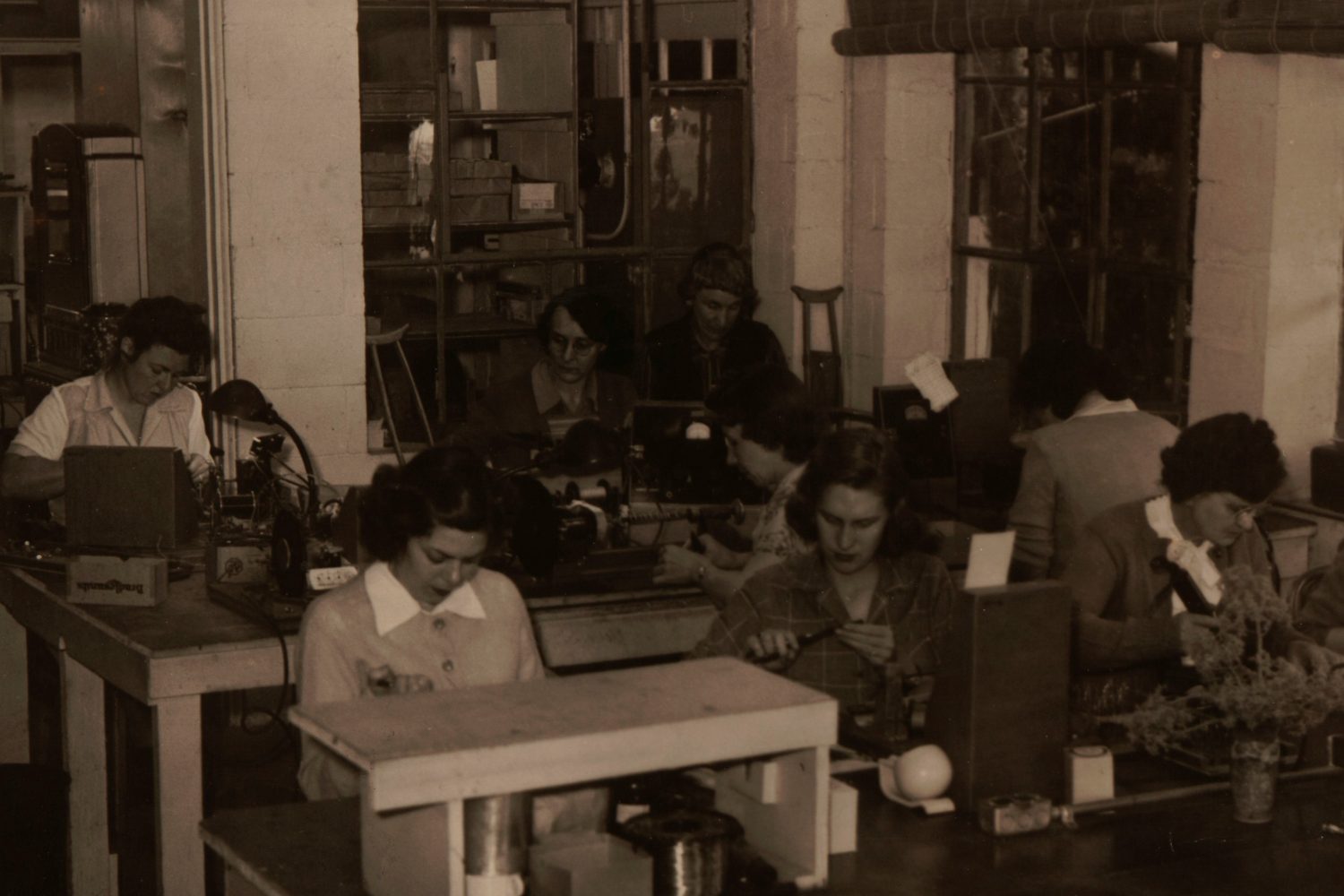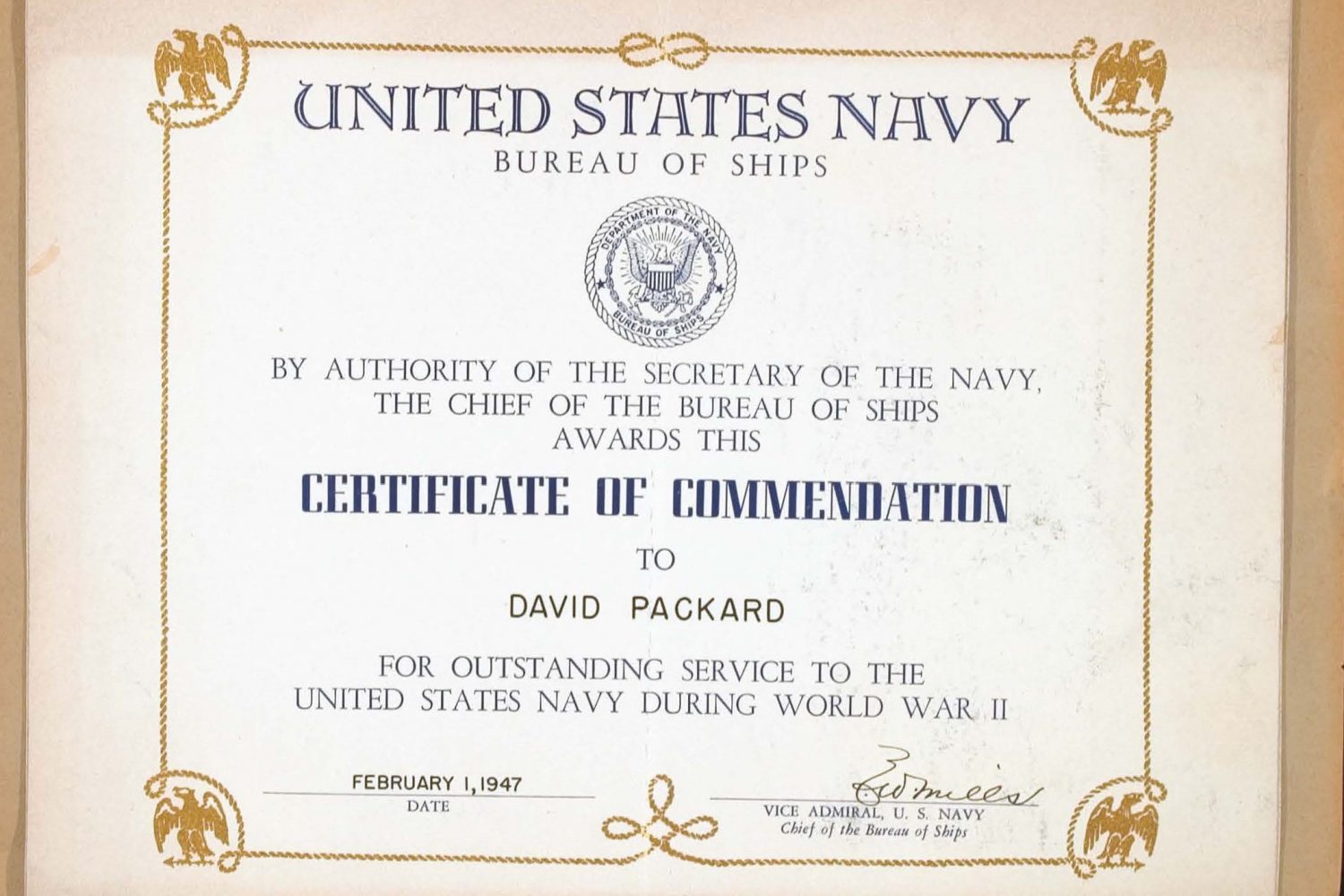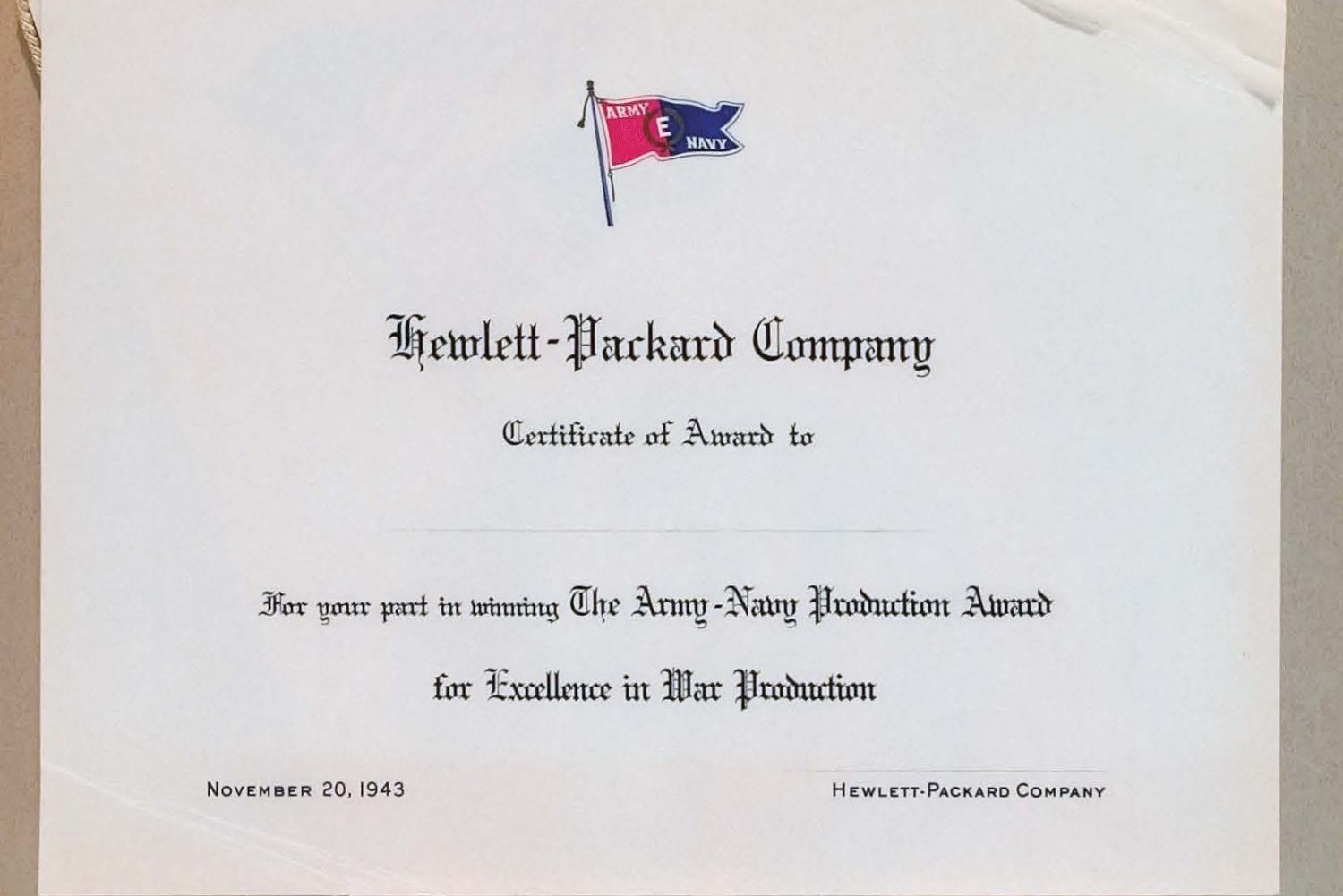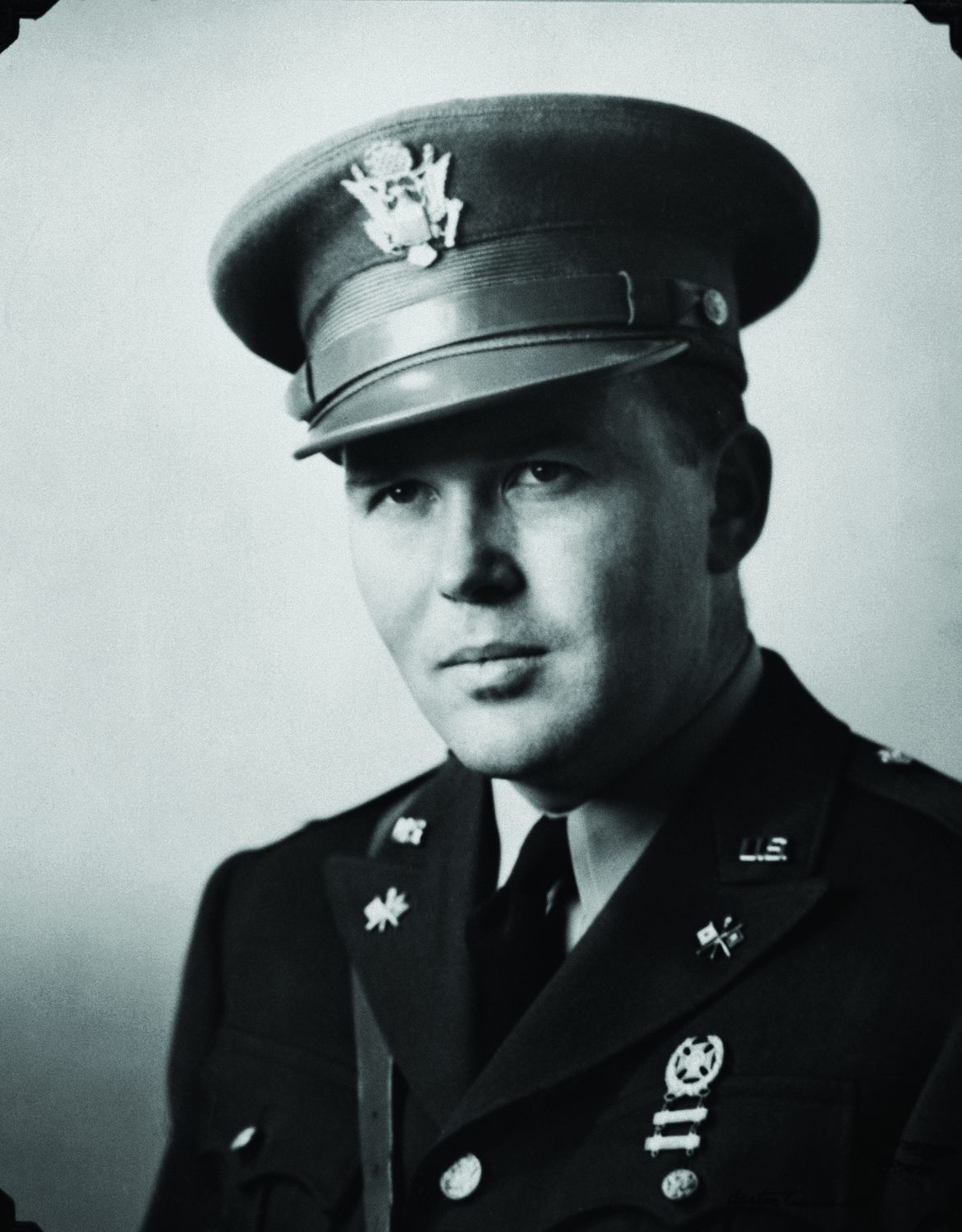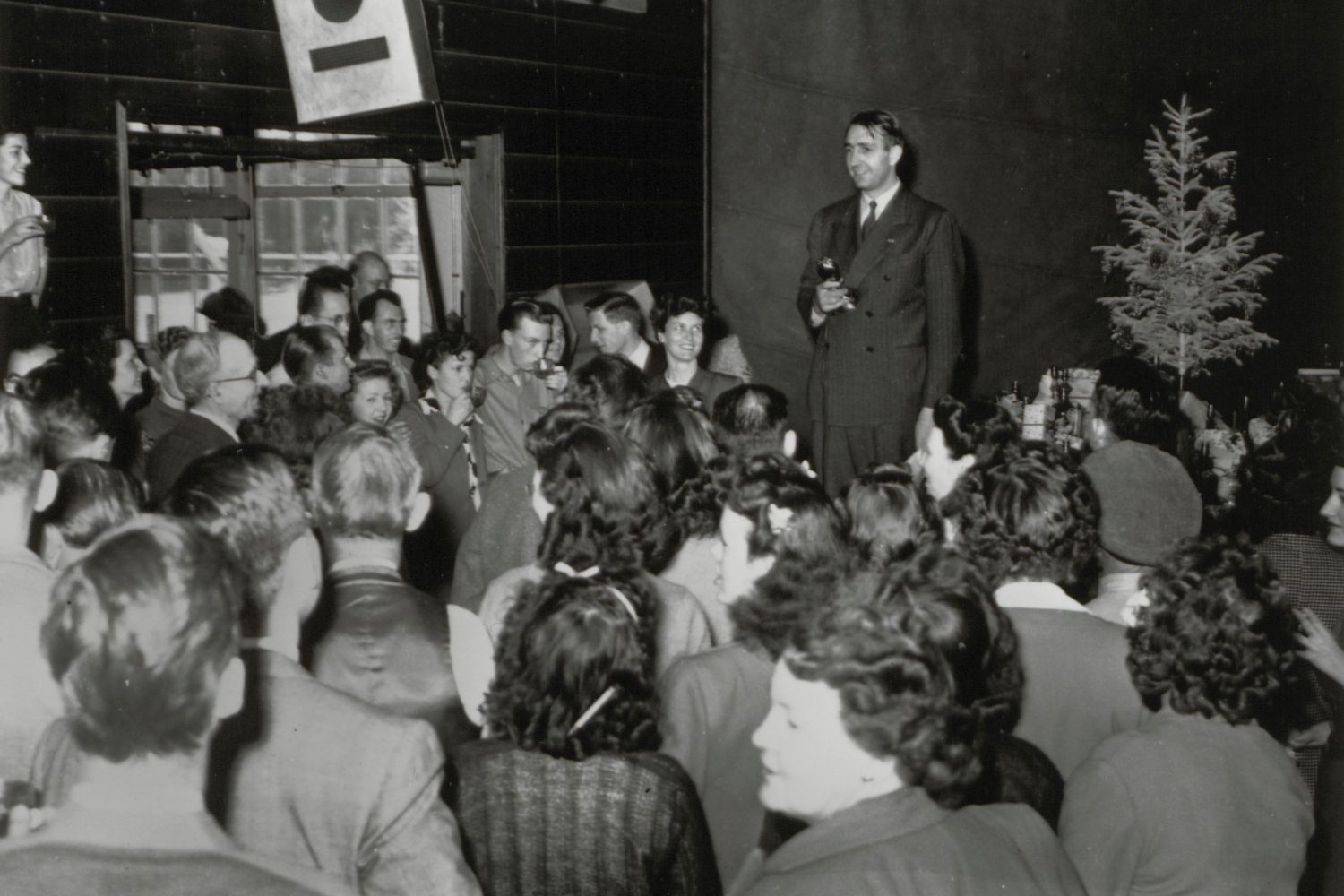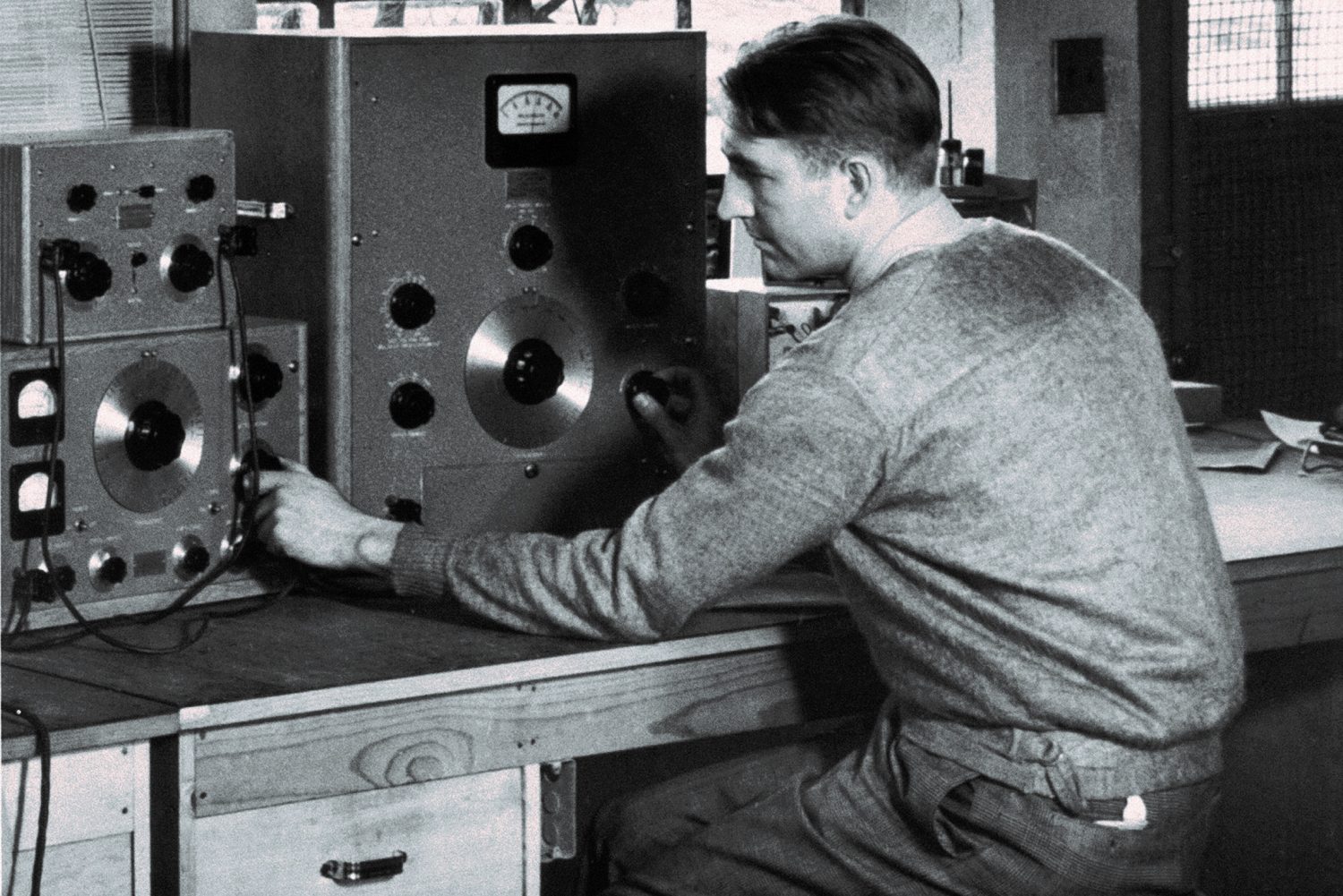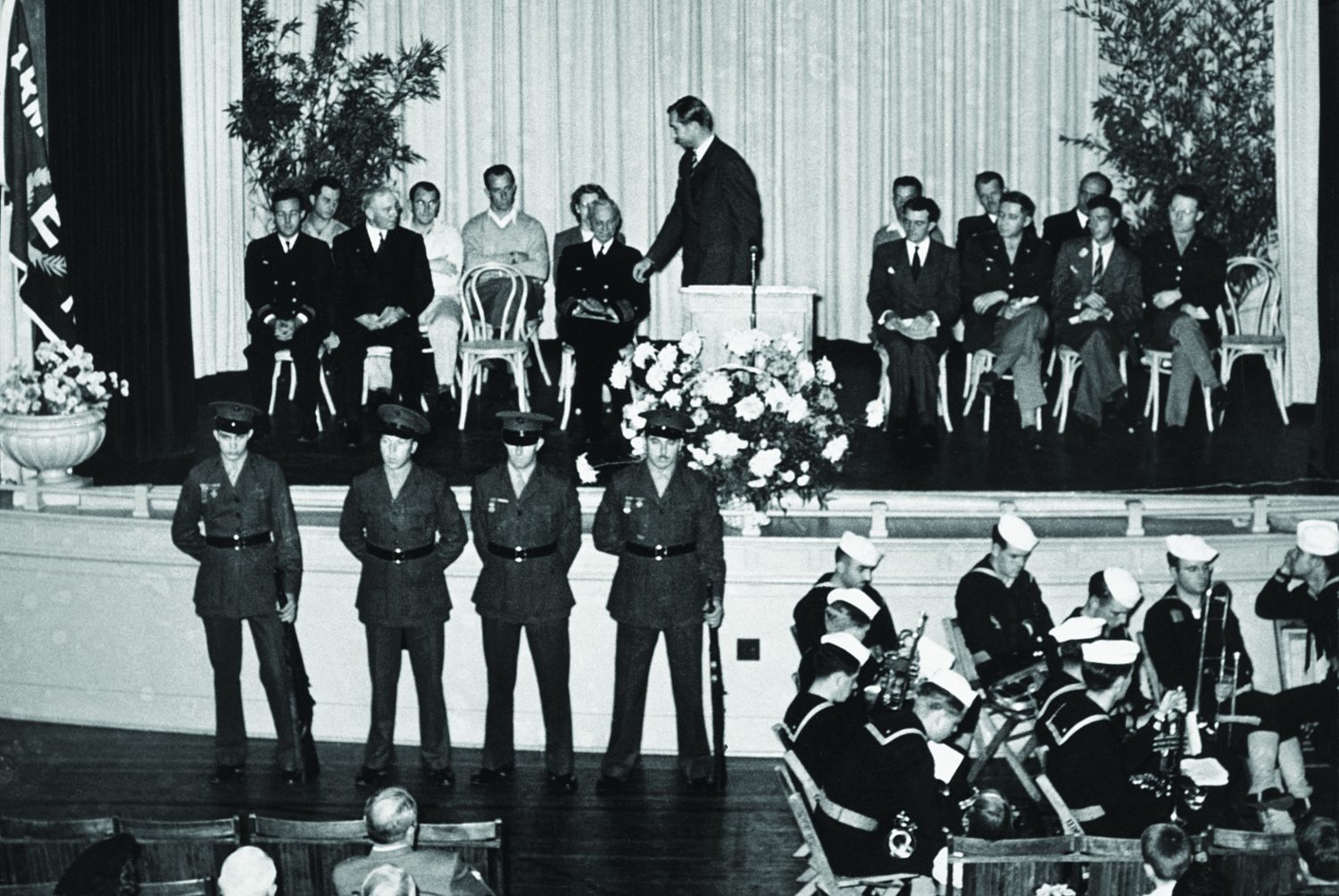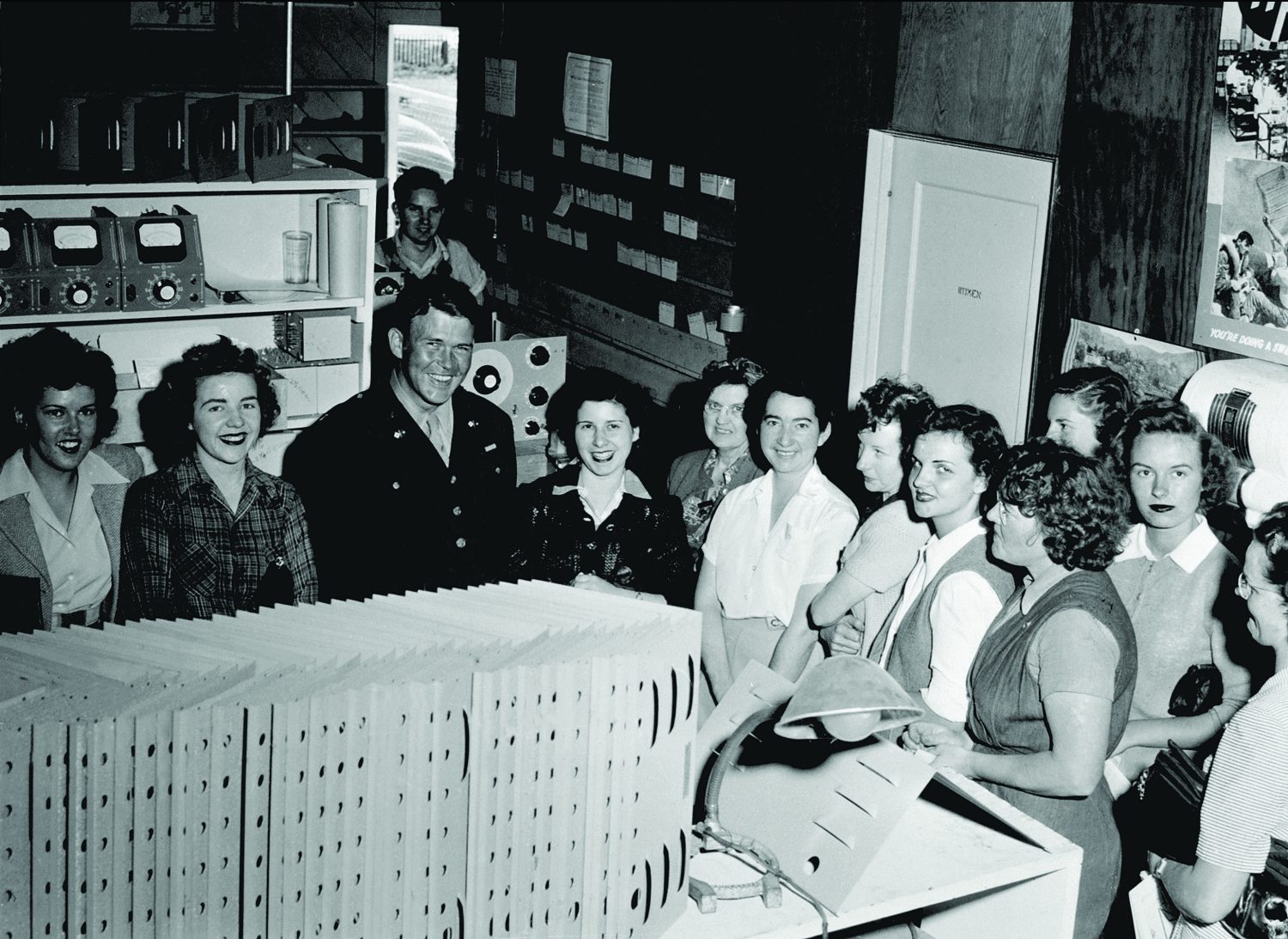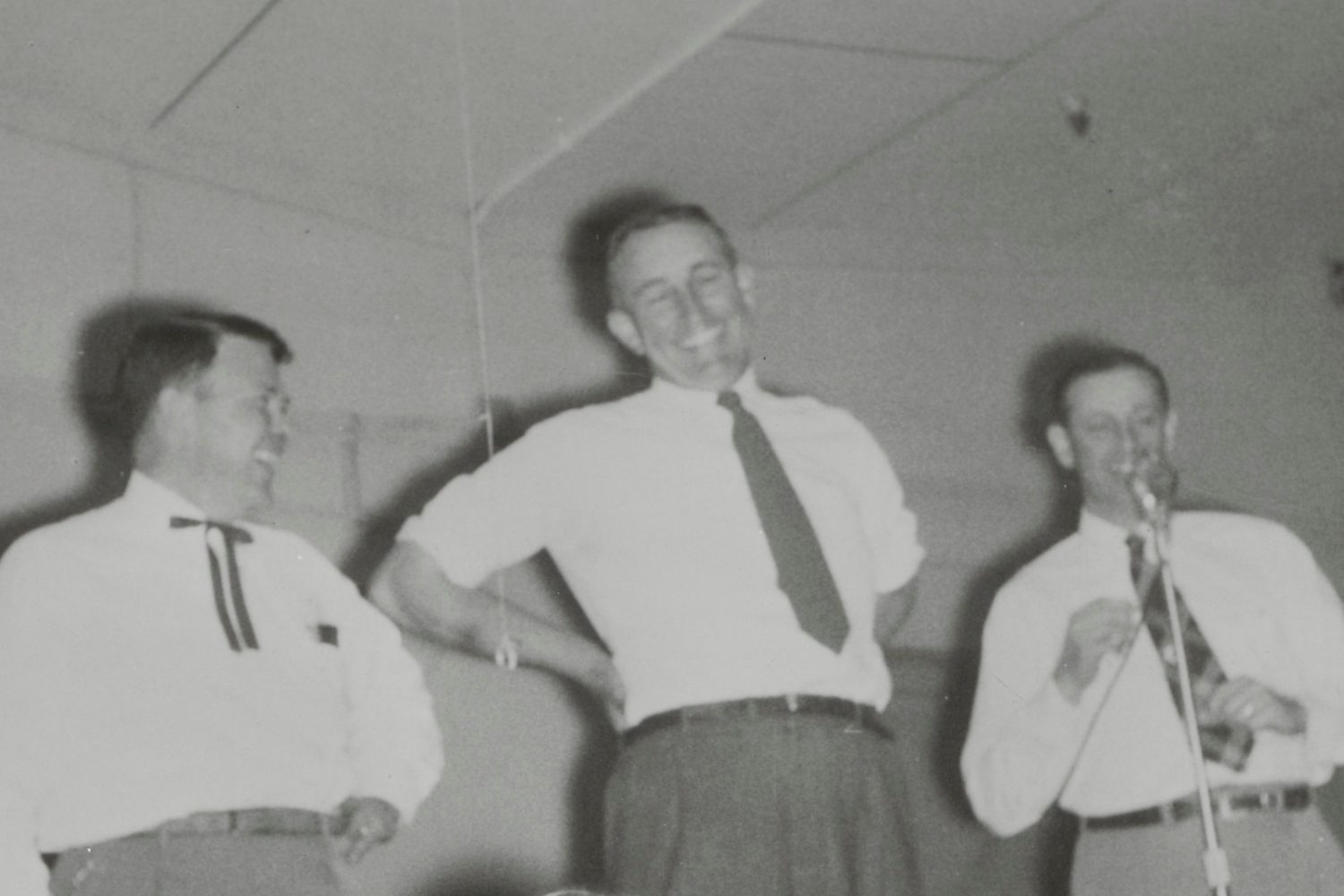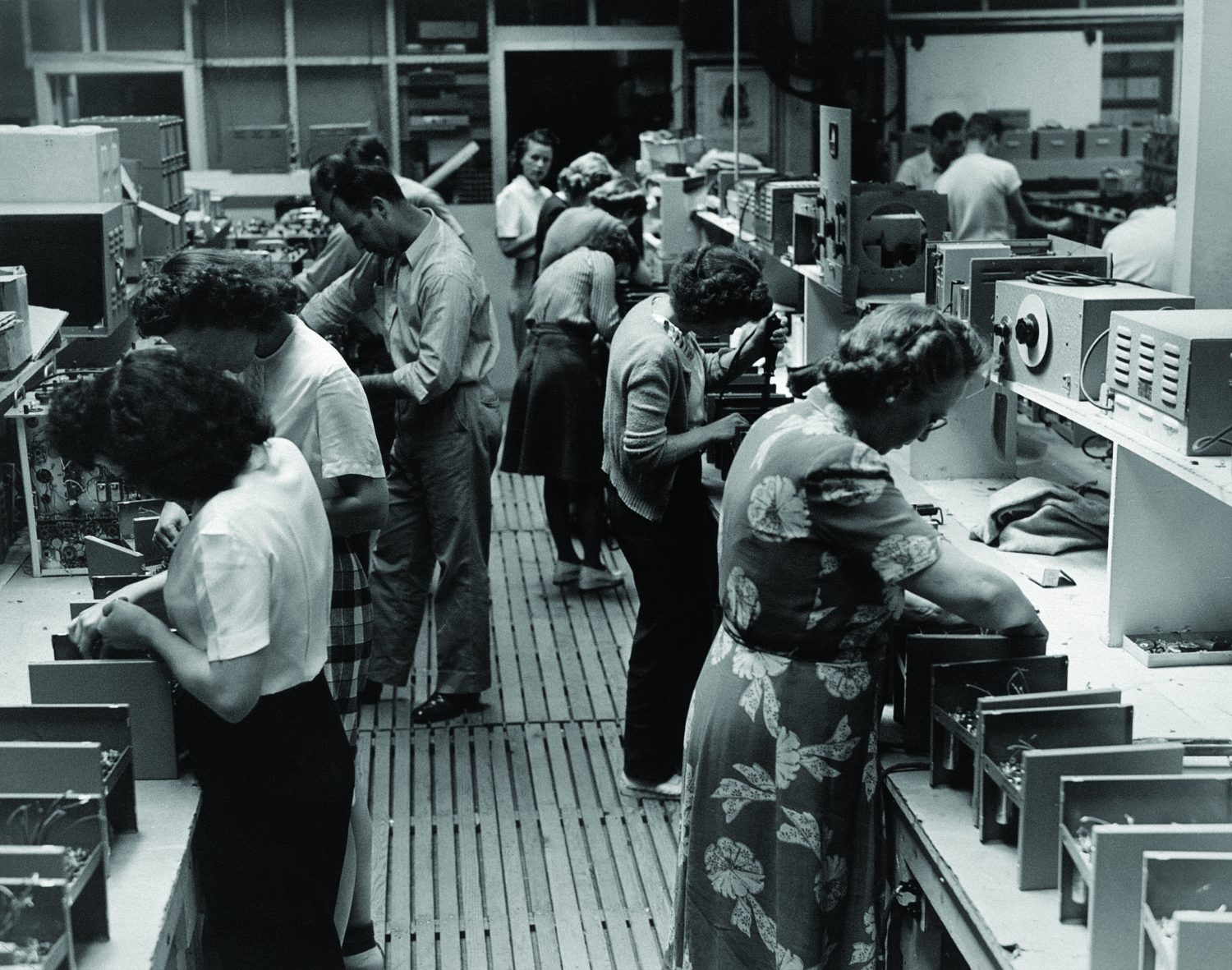Tag Results for
"World War II" - 16 Total Result(s)
item
A Diversifying Workforce: HP’s Growth
Wartime production demands led Hewlett-Packard’s workforce to grow from 3 employees in 1940 to around 200 by 1945. The combination of a national labor shortage and the company’s nondiscriminatory hiri ...
item
A Letter of Commendation
The war brought Hewlett-Packard into its first work on microwave technology through the Leopard project, a top secret program to disrupt enemy radar and protect Allied ships. The demands of the projec ...
item
Army-Navy “E” Award: Sharing Credit
Hewlett-Packard employees were invited to share in the company’s Army-Navy “E” Award with personalized certificates of appreciation.
item
Bill Hewlett Engineering for Victory
Bill Hewlett spent most of the war in the Army Aviation Ordnance department, an area where his engineering skill could be put to use. In 1945, however, he was part of a small team that travelled to Ja ...
item
Celebrate: HP Christmas Party 1945
Just six years after Hewlett-Packard began in a garage, Dave Packard was addressing a good-sized crowd at the company’s annual Christmas party. Hewlett-Packard had around 200 employees by this point. ...
item
Dialing in an Early Victory: HP 205A
The 205A, seen here being tested by Dave Packard, was higher power than the company’s original 200A oscillator. With the demand for radio equipment soon to come from World War II, it was perhaps Hewle ...
item
HP’s Excellence in Wartime Production
Hewlett-Packard received the coveted Army-Navy “E” Award for excellence in wartime production four times for its work during World War II. Dave Packard accepted the first award on behalf of the compan ...
item
Major Hewlett Pays a Visit to HP
Bill visited Dave at Hewlett-Packard as often as he could while serving in the Army. Bill was a major when this picture was taken, but was a lieutenant colonel by the time of his discharge in 1945.
item
Noel Eldred: Confidence in a Confidant
Dave Packard recruited Noel Eldred (right, shown here in 1954) to Hewlett-Packard during the war. Noel would be Dave’s right-hand man and head of operations while Bill Hewlett served in the military, ...
item
The “Pass On” Assembly Line
Early on, the company pioneered a “pass on” type of assembly line to maximize efficiency for war production. The new system would remain in place from that point forward.

